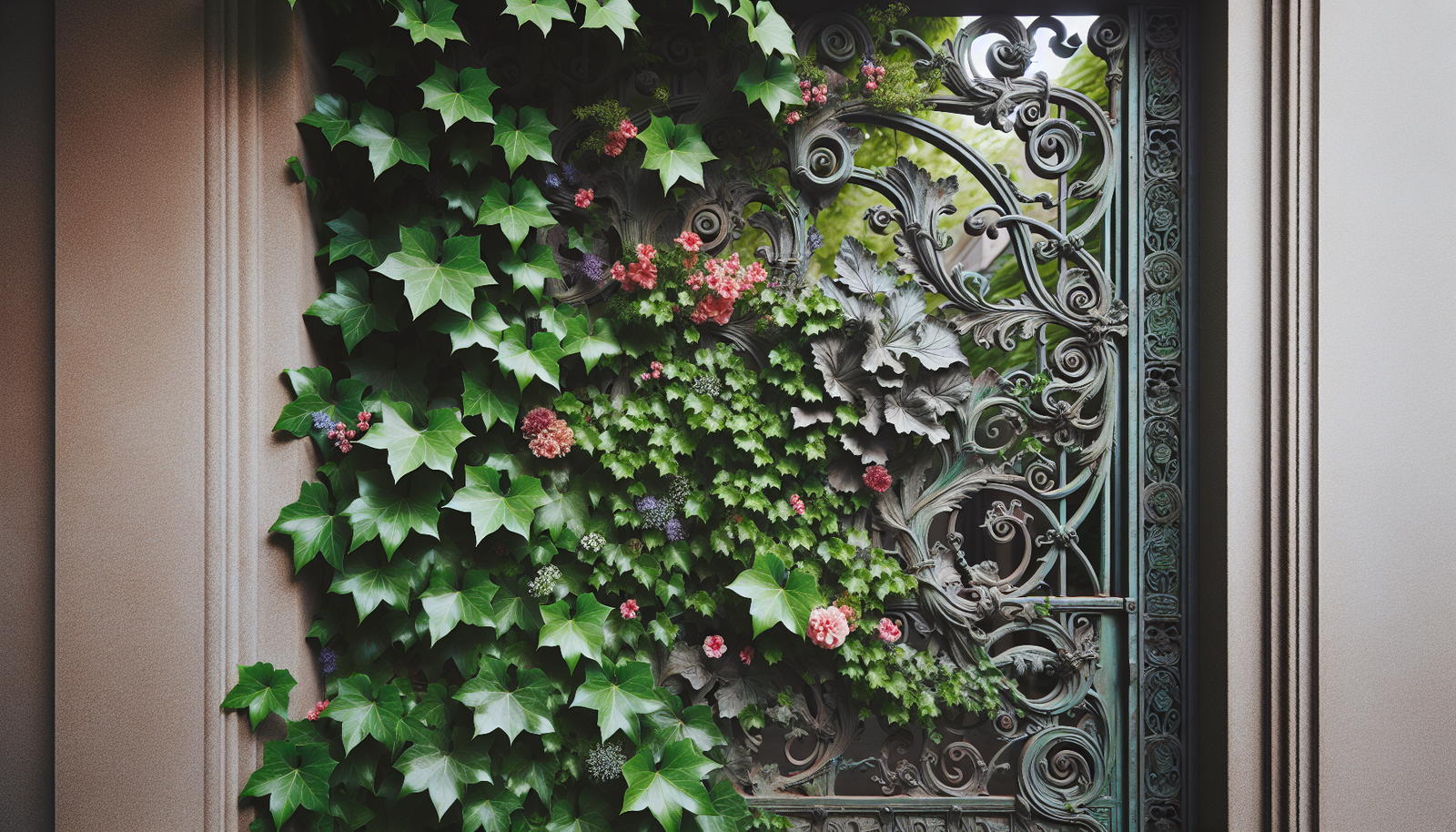
Living in a historic district can be a dream come true for many, with their charm and rich history. However, when it comes to urban farming, navigating the challenges of maintaining the aesthetics can be a tricky task. With the juxtaposition of old-world architecture and the desire for sustainable living, finding the balance between preserving the historic charm while incorporating modern farming practices is essential. In this article, we will explore some practical tips on how you can address the challenges of urban farm aesthetics in historic districts, ensuring a harmonious blend of the old and the new.
Background on Urban Farming in Historic Districts
Historic districts are known for their rich cultural heritage and architectural significance. These carefully preserved neighborhoods provide a glimpse into the past and are cherished for their unique character. However, with the growing popularity of urban farming, a new challenge has emerged – how to address the aesthetics of these farms in historic districts.
Historic preservation guidelines and regulations
Historic preservation guidelines and regulations play a crucial role in ensuring that the architectural integrity of these districts is maintained. These guidelines are carefully crafted to protect the historical character and charm of the area. However, they often do not account for the unique needs and aesthetics of urban farms. Balancing the regulations to incorporate both the historical value and the modern needs of urban farming can be a daunting task.
Growing popularity of urban farming in cities
Urban farming has gained significant traction in recent years, as more people recognize the importance of sustainable, locally sourced food. Growing food in urban areas not only reduces the carbon footprint associated with transportation but also creates a stronger connection between communities and their food sources. With this growing popularity, urban farms are increasingly finding their way into historic districts, necessitating a thoughtful approach to address their aesthetics.
Importance of Addressing Urban Farm Aesthetics
Preserving the historical character of the district and promoting visual harmony and compatibility are the cornerstones of addressing urban farm aesthetics in historic neighborhoods.
Preserving the historical character of the district
Historic districts are steeped in tradition and serve as a window into the past. The buildings, cobblestone streets, and architectural details all contribute to the unique character of these neighborhoods. When integrating urban farms into historic districts, it is crucial to ensure that the historical charm is preserved and enhanced rather than compromised. By doing so, the urban farms become an integral part of the story told by these districts, enriching the overall cultural fabric.
Promoting visual harmony and compatibility
Urban farms, with their utilitarian structures and agricultural elements, can be visually disruptive if not carefully integrated into the historic surroundings. By addressing urban farm aesthetics, we aim to prioritize visual harmony and compatibility. This involves designing and implementing farming infrastructure that seamlessly blends with the existing landscape and architectural elements. The result is a visually pleasing integration of the old and the new, creating an enchanting environment for both residents and visitors.
Understanding the Challenges
Addressing urban farm aesthetics in historic districts comes with its fair share of challenges. Preservation of architectural integrity, balancing modern farming techniques with historical context, and integrating farming infrastructure are some of the key hurdles to overcome.
Preservation of architectural integrity
Preserving the architectural integrity of historic districts is of paramount importance. Every building, façade, and streetscape tells a story and contributes to the overall historical narrative. When introducing urban farms into these districts, it is crucial to ensure that any modifications or additions to existing structures are done in a way that respects the original design and materials. By preserving architectural integrity, we maintain the authenticity and historical value of the district.
Balancing modern farming techniques with historical context
Modern farming techniques have evolved significantly over the years with a focus on efficiency and productivity. However, these techniques may not always align seamlessly with the historical context of a district. Maintaining a balance between modern farming methods and the historical sensibilities of the district is essential. This can be achieved by carefully selecting and adapting farming techniques that are compatible with the district’s aesthetics and cultural heritage.
Integration of farming infrastructure
Urban farms require certain infrastructure elements such as irrigation systems, fencing, and storage facilities. Integrating these utilitarian structures into the historic landscape can be a challenge. It is important to find innovative ways to incorporate these elements without compromising the visual appeal of the district. By strategically placing and designing farming infrastructure, we can ensure that the functionality of the farm is achieved while maintaining the historical charm of the area.
Strategies for Addressing Urban Farm Aesthetics
Addressing urban farm aesthetics in historic districts requires a multidimensional approach. By researching and understanding local regulations, collaborating with historic preservation organizations, and designing farm structures in harmony with historic architecture, we can navigate the nuances of preserving the district’s heritage while embracing the benefits of urban farming.
Researching and understanding local regulations
Before embarking on any urban farming project in a historic district, it is important to thoroughly research and understand the local regulations. These regulations typically outline the requirements and restrictions regarding modifications to existing structures, the use of certain materials, and the placement of farming infrastructure. By familiarizing ourselves with these guidelines, we can ensure that our urban farm project complies with the necessary requirements and is respectful of the district’s historical significance.
Collaborating with historic preservation organizations
Collaborating with historic preservation organizations can provide valuable insights and guidance when addressing urban farm aesthetics. These organizations have expertise in maintaining and preserving the historical integrity of a district. By engaging with them early in the planning process, we can benefit from their knowledge and work collaboratively to find solutions that strike a balance between urban farming and historic preservation.
Designing farm structures in harmony with historic architecture
Designing farm structures that are in harmony with the district’s historic architecture is crucial to ensure a seamless integration. This involves utilizing materials and design elements reminiscent of the area’s historical character. By paying attention to details such as architectural styles, color palettes, and roof designs, the farm structures can become an extension of the district’s architectural narrative. Adopting a contextual approach to architectural design allows for the creation of farm structures that not only serve their functional purpose but also contribute positively to the visual aesthetics of the district.
Preservation of Architectural Integrity
Preserving the architectural integrity of historic districts is a foundational principle when addressing urban farm aesthetics. It involves respecting the original design and materials of the existing structures and utilizing adaptive reuse of these buildings for farming purposes.
Respecting the original design and materials
When integrating urban farms into historic districts, it is essential to respect the original design and materials of the buildings. This can be achieved by avoiding major alterations to the façade and ensuring that any modifications are reversible. For example, installing removable planter boxes or trellises can allow for the cultivation of crops without permanently altering the historical structure. By respecting the original design, we honor the craftsmanship and architectural legacy of the district.
Using adaptive reuse of existing structures for farming purposes
Adaptive reuse of existing structures is an excellent way to preserve the architectural integrity of a historic district while accommodating urban farming needs. Farming can be incorporated into vacant buildings or underutilized spaces, minimizing the impact on the district’s aesthetics. Adaptive reuse not only breathes new life into neglected structures but also tells a story of sustainable agriculture within a historical context. By repurposing these spaces, we can create a harmonious blend of the old and the new.
Balancing Modern Farming Techniques with Historical Context
Incorporating modern farming techniques while being mindful of the historical context of a district is key to addressing urban farm aesthetics. By integrating sustainable farming methods and selecting crops and livestock that are compatible with the historic environment, we can strike a balance that respects both the past and the present.
Incorporating sustainable farming methods
Sustainability is an essential aspect of modern farming practices. When implementing sustainable farming methods in historic districts, it is important to choose techniques that are visually discreet and environmentally friendly. For example, utilizing low-impact irrigation systems or integrating vertical farming techniques can minimize the visual disruption while maximizing productivity. By adopting sustainable practices, urban farms can actively contribute to the preservation of the district’s historical and ecological balance.
Choosing crops and livestock compatible with the historic environment
Selecting crops and livestock that are compatible with the historic environment is crucial in maintaining visual harmony in urban farms. Native or heirloom plant varieties can be chosen to reflect the historical agricultural practices of the region. Livestock breeds that were historically prevalent in the area can be given priority, further reinforcing the connection between the farm and the district’s heritage. By aligning the farming choices with the historical context, we create a cohesive aesthetic narrative that celebrates the past while embracing modernity.
Integration of Farming Infrastructure
Integrating farming infrastructure into the existing landscapes of historic districts requires careful consideration. By incorporating agricultural elements thoughtfully and screening or disguising utilitarian structures, we can strike a balance between functionality and aesthetics.
Incorporating agricultural elements into existing landscapes
One approach to integrating farming infrastructure is by incorporating agricultural elements into the existing landscapes of historic districts. For example, planting orchards or vegetable gardens in communal areas can provide a visual connection to the agricultural roots of the district. Historic masonry or wrought-iron fencing can be utilized to create enclosed areas for livestock or larger crop fields. By thoughtfully incorporating these elements, urban farms become an organic extension of the historic landscape, enriching the overall aesthetic appeal.
Screening and disguising utilitarian structures
Utilitarian structures such as storage sheds or composting areas are essential for the functioning of an urban farm but can be visually disruptive. One strategy for addressing this challenge is to screen or disguise these structures using landscaping techniques. Utilizing climbing plants or installing trellises can help soften the appearance of these structures, making them blend into the surroundings. By artfully concealing functional elements, we ensure that the visual focus remains on the historical character of the district.
Designing Farm Structures in Harmony with Historic Architecture
Designing farm structures in harmony with the historic architecture of a district is key to creating a visually cohesive environment. By utilizing materials and design elements reminiscent of the district’s historic character and adopting a contextual approach to architectural design, urban farms can seamlessly merge with the existing architectural fabric.
Utilizing materials and design elements reminiscent of the district’s historic character
Choosing materials and design elements that are reminiscent of the district’s historic character is essential when designing farm structures. Traditional materials such as wood, stone, or brick can be used to construct farm buildings, harmonizing with the existing architectural palette. Likewise, incorporating architectural details and motifs from the surrounding historical buildings into the design of farm structures establishes a visual connection and creates a sense of continuity. By utilizing familiar materials and design elements, the farm structures become an integral part of the district’s architectural vernacular.
Adopting a contextual approach to architectural design
Adopting a contextual approach to architectural design involves considering the historical context and architectural styles of the district when designing farm structures. This approach ensures that the farm structures are in harmony with the overall architectural narrative of the area. For example, if the district predominantly features Victorian-era architecture, the farm structures can be designed to echo the charm and elegance of that period. By thoughtfully contextualizing the design, the farm structures become an aesthetic asset rather than an anomaly within the historic district.
Engaging with the Community
Engaging with the community is a crucial aspect of addressing urban farm aesthetics in historic districts. By educating the public on the importance of urban farming aesthetics, building support, and fostering partnerships with local residents and businesses, we create a shared vision for the integration of urban farms in these remarkable neighborhoods.
Educating the public on the importance of urban farming aesthetics
Education is an essential step in garnering public support for urban farming aesthetics in historic districts. By highlighting the benefits of urban farming and its role in fostering sustainability and community engagement, we can overcome potential resistance or misconceptions. Public workshops, educational campaigns, and interactive events can be organized to raise awareness and enlighten the community about the positive impact of aesthetically pleasing urban farms. By sharing the vision and rationale behind urban farming aesthetics, we can build a broad base of support.
Building support and partnerships with local residents and businesses
Building support and partnerships with local residents and businesses is vital to the success of integrating urban farms in historic districts. Open communication channels, collaborative planning processes, and involving the community in decision-making can foster a sense of ownership and pride. By actively seeking input from residents and engaging local businesses, we create a shared responsibility for the visual aesthetics of the farms. This collaborative approach ensures that the urban farms become a collective effort, celebrating the unique character and community spirit of the historic district.
Case Studies of Successful Urban Farm Aesthetics in Historic Districts
Examining case studies of successful urban farm aesthetics in historic districts can provide valuable insights and inspiration for future projects. Two notable examples include the historic farm restoration in an urban setting and the adaptive reuse of a historic building for agricultural purposes.
Example 1: Historic farm restoration in an urban setting
In this case, an abandoned historic farm located within a vibrant historic district was restored to its former glory. The architectural integrity of the farmhouse, barn, and outbuildings was preserved, and sustainable farming techniques were implemented. Community involvement was key in achieving this project’s success, with local residents and businesses actively participating in the restoration efforts. The restored farm now serves as an educational center, showcasing the rich agricultural history of the region while accommodating urban farming practices. This project demonstrates how urban farm aesthetics can be successfully integrated into a historic district, bridging the gap between the past and the present.
Example 2: Adaptive reuse of a historic building for agricultural purposes
In this example, a vacant historic building within a historic district was repurposed for agricultural use, breathing new life into a neglected space. The building’s original features, such as exposed brick walls and large windows, were carefully preserved and incorporated into the design. The interior of the building was transformed into a vertical hydroponic farm, utilizing innovative farming techniques to maximize crop production. The project successfully showcases the adaptive reuse of a historic building while integrating modern farming methods. The juxtaposition of the old and the new creates a visually captivating environment, demonstrating the potential of urban farm aesthetics in historic districts.
In conclusion, addressing the challenges of urban farm aesthetics in historic districts requires a thoughtful and comprehensive approach. By preserving the historical character of the district, promoting visual harmony and compatibility, understanding the challenges, implementing effective strategies, and engaging with the community, we can create visually appealing urban farms that seamlessly integrate with the architectural fabric of historic neighborhoods. The preservation of architectural integrity, balancing modern farming techniques with historical context, integrating farming infrastructure, and designing farm structures in harmony with historic architecture are all essential components of this process. By embracing the unique opportunity to merge the past and the present, we can create urban farms that not only provide sustenance but also contribute to the cultural and visual richness of historic districts.







